PHS 7.3 phono pre-amplifier
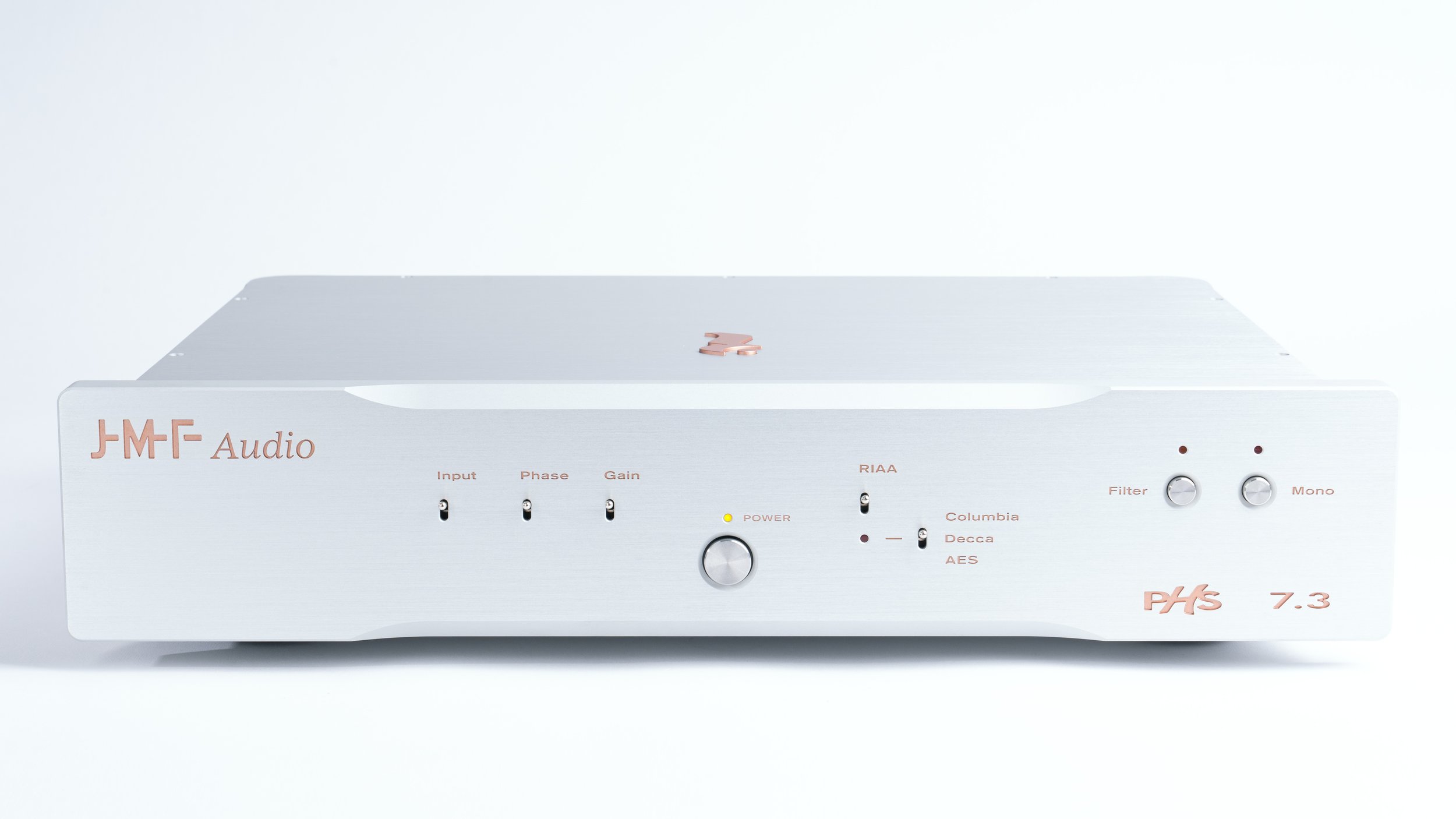
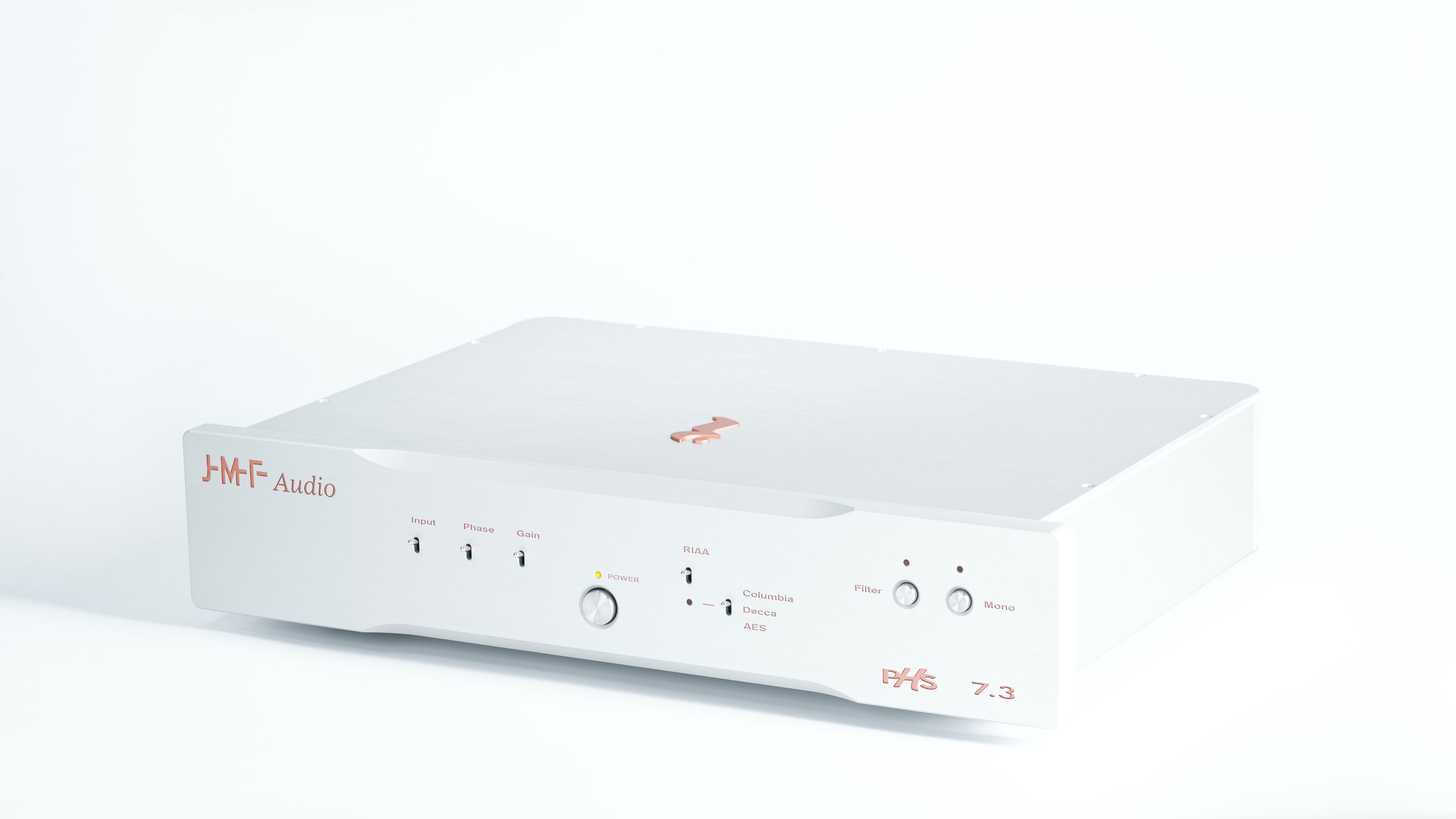
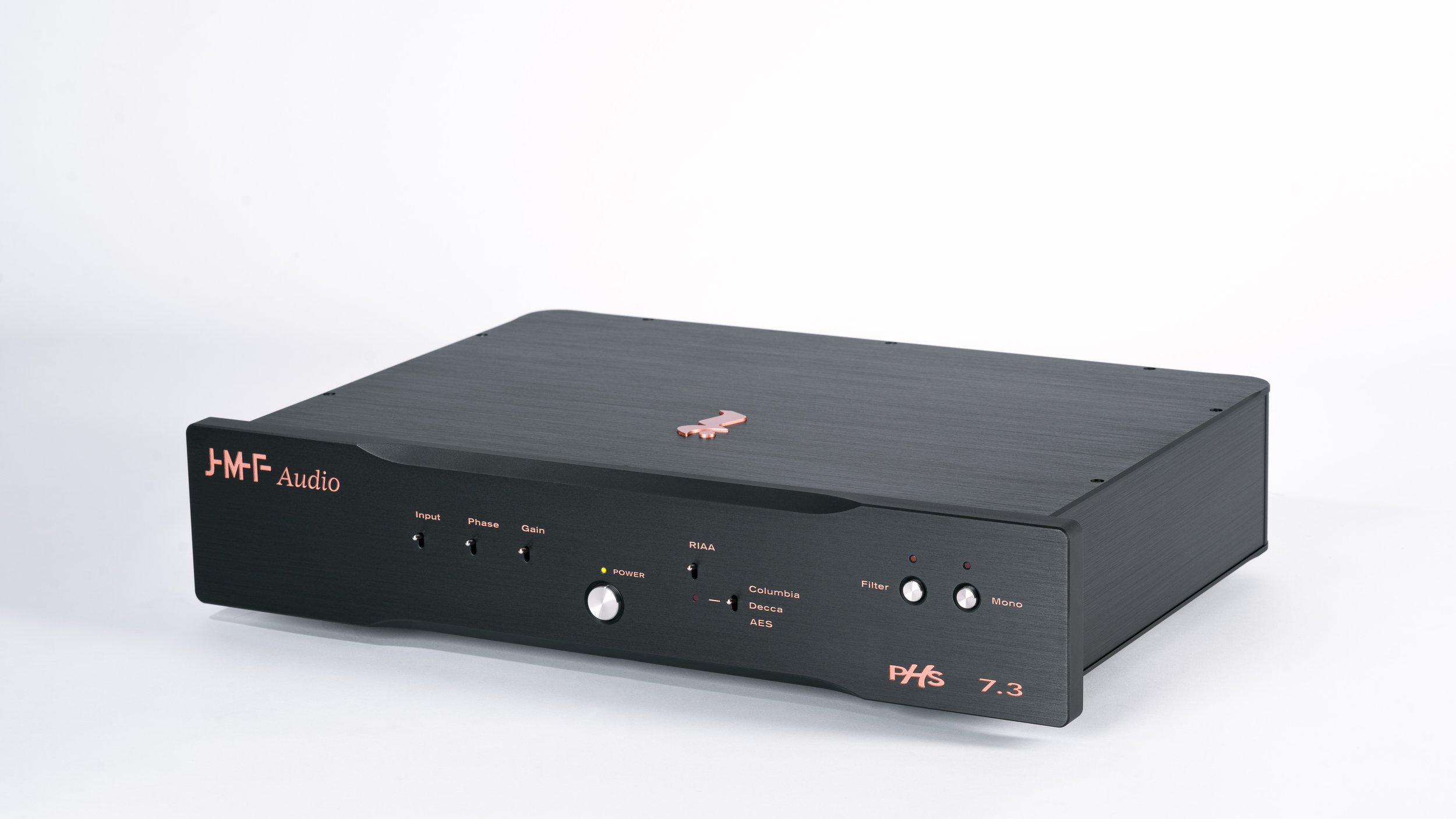
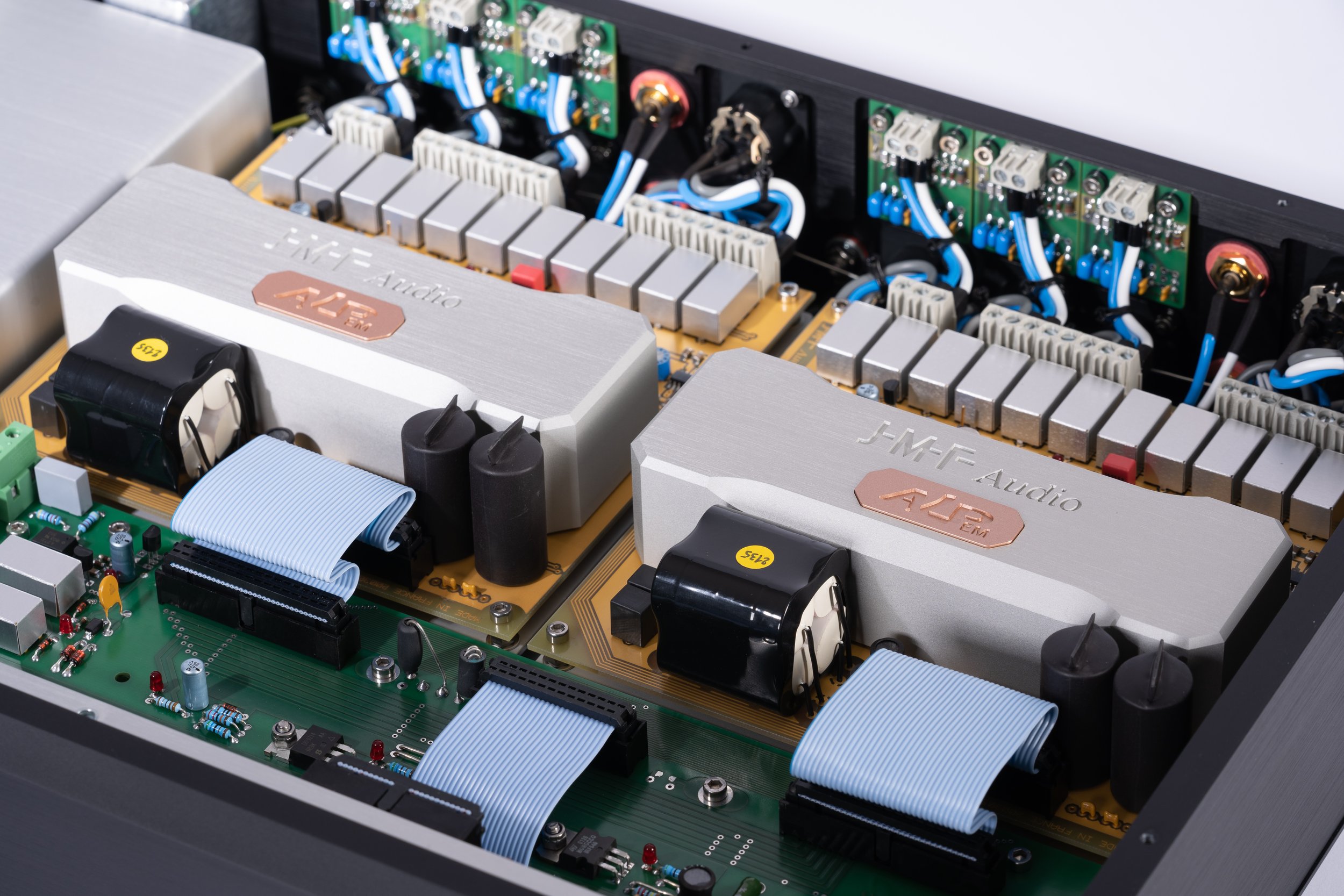
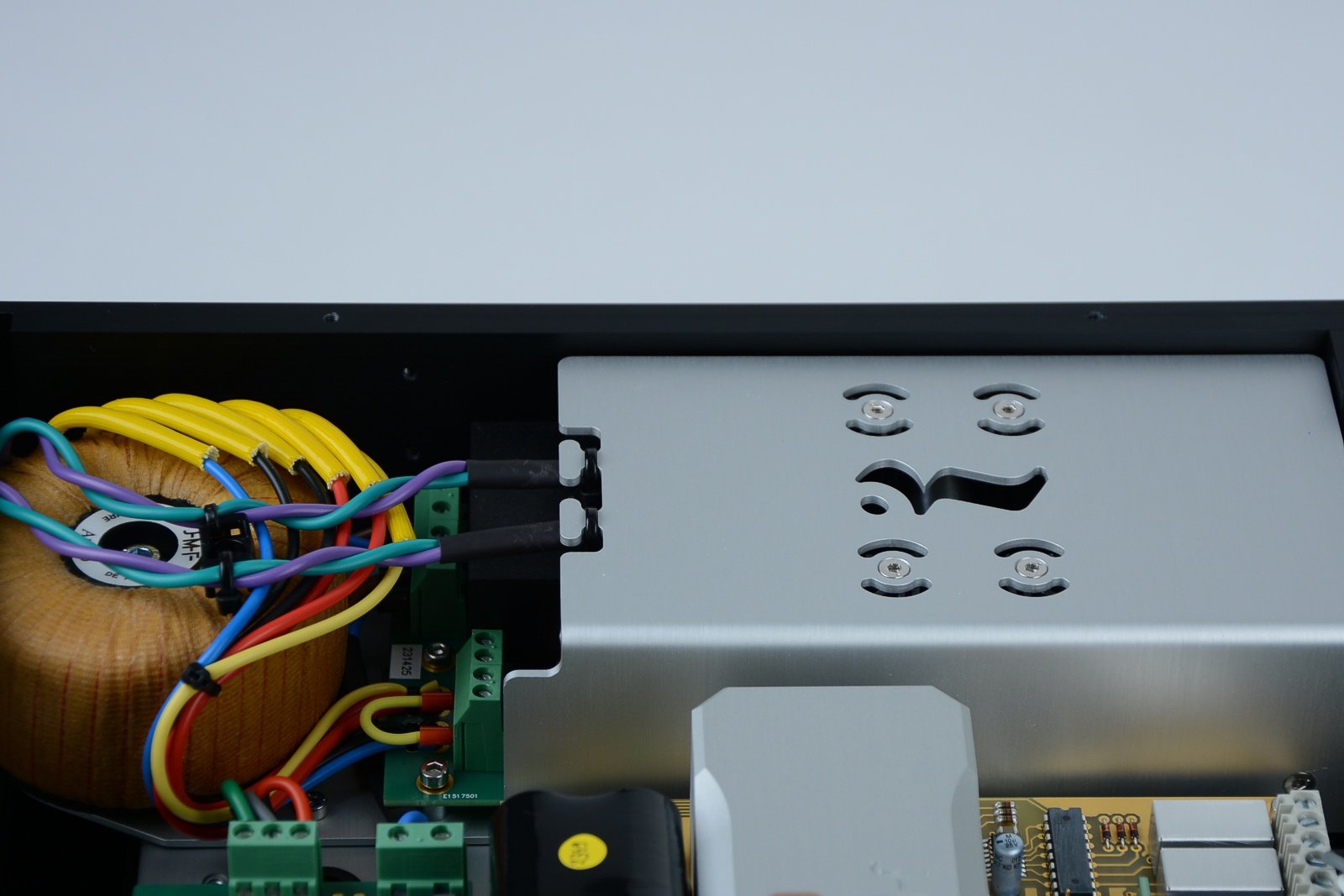
The PHS 7.3 is JMF Audio’s remarkable reference phono pre-amplifier, playing music with unrivaled density, articulation, subtlety and tonal accuracy, revealing the slightest nuances. The featured true mono mode and alternative linearization curves will be valued by record collectors.
For further information, please refer to the main page > Phono pre-amplifiers
The PHS 7.3 is intended for the most demanding vinyl record lovers and record collectors who wish to enjoy the early vinyl mono recordings without compromise.
The alternative curves:
The alternative Columbia, Decca and AES curves are easily selected from the lever on the front panel. The processing takes advantage of the JMF Audio passive components that are part of the RIAA circuit, without affecting it, thus guarantying the highest quality. The JMF Audio implementation of the alternative curves is named ALP-EM for Enhanced Matrix and is controlled by a dedicated custom programmed logic circuit. This unique implementation has also been registered for intellectual property. The alternative curves respect the three original parameters (turn-over, roll-off and bass shelf).
For convenience, switching from one curve to another is made while retaining the same output level.
The mono mode:
For the music-loving record-collectors to enjoy the early vinyl mono recordings without compromise, the PHS 7.3 features a unique mode, activated by the extreme right button of the front panel, labeled as Mono. This mode takes full advantage of the dual-mono concept of the PHS 7.3, by reducing the overall noise, enhancing the rendering with stereo cartridges (without any change on the cabling) and obviously getting the most out of mono cartridges, vintage or cutting-edge. In mono mode, the audio signal is equally balanced to the left and right stereo outputs.
Another challenge taken up, no additional electronic circuits are involved for the mono mode of the PHS 7.3 phono preamplifier, ensuring total transparency without change in performance.
Optimized MC inputs:
The PHS 7.3 features optimized inputs for MC cartridges. The resistive loads are also of lower values.
—-
Notes for the records collectors:
When micro groove vinyl records were introduced in the late 1940's, most record companies and their mastering facilities already applied recording curves to cut records masters. By reducing the levels in low frequencies and increasing the levels in high frequencies, the groove's width was narrowed and evened over the bandwidth. This allowed more music to be recorded on the disc and lead to less overall distortion thanks to reduced cutter and pickup excursions. Applying the inverse curve at playback would permit to recover the original tone along with reducing the perceived surface noise thanks to the low-pass effect.
However most record companies, American, English and European, applied proprietary curves before adopting, with more or less eagerness, the RIAA curve defined in the mid 1950's.
Along with the introduction of the micro groove vinyl record, larger bandwidth microphones and recording equipment also became more widely used and high-fidelity audio emerged; allowing jazz and classical music icons to release recordings that have become of historical value.
Although playing back these valuable records is possible using a RIAA tuned phono preamplifier, the overall emotional content would fail to be translated to the listener due to incorrect tonal balance and its side effects.
A lot of information on historical recording curves and their application can be found and heard from record collectors and products manufacturers, but many sources tend to disagree or copy each other. Many beliefs also seemed unrealistic to us. Therefore, JMF Audio spent years studying the subject and the most relevant solution for a phono preamplifier to serve the music and the demanding record collectors.
Visiting record shops, seeking first pressing records from the 50's and 60's at sellers located in the US, UK, Europe, Hong Kong, Japan; seeking books and publications by past and present specialists; meeting with record collectors and discussing with re-mastering engineers from England and Germany… The JMF Audio records and books collections increased tremendously over the years, with countless accompanying notes and data.
Methods for determining the most suitable compensation curves, based on measurements and comparisons in JMF Audio's studios, backed with statistics, were developed. These methods have been registered for intellectual property.
Weighting the results with the value of the records on musical and historical criteria, by artist, by label, it was concluded that only a few alternative curves could cover all cases of interest, while ensuring ease of use. These curves were labelled Columbia, Decca and AES.
According to our experience, some record companies could have announced RIAA compliance (printed on sleeves) earlier than actuality as our evaluations drew that the mastering remained made with a proprietary curve. Other record labels seemed to have released different records using different curves in relatively short periods of time.
With these alternative curves, it has been made possible to follow the career of major artists in the original tonality, with preserved intend and emotional move. Going through recordings from Frank Sinatra, Duke Ellington, Benny Goodman, Charlie Parker, Dave Brubeck, Louis Armstrong and many more requires the use of the four curves featured in the PHS 7.3. The alternative curves respect the three original parameters (turn-over, roll-off and bass shelf).
Registered owners will access a detailed list of suggested applicable curves according to the records label with estimated change-over date, records identification as well as guides through notions such as recording, mixing, mastering, pressing, re-pressing, licensing, re-issues, re-recording, re-mastering…
The alternative recording curve matching belonging to the mono records era, PHS 7.3 users will advantageously select the mono mode when applying alternative curves.
PHS 7.3
Number of outputs
3 (2 balanced, 1 un-balanced)
Number of inputs
3
Original input module types
MC optimized (x2) and MC/MM (x1)
Analog circuit board technology
PGP 24 carat gold
Linearization filter type
ALP-EM (Enhanced Matrix)
Linearization passive components
Reference grade (handmade operations at the JMF Audio’s manufacture)
Recording curves
RIAA, Columbia, Decca, AES
Mono mode
Yes
Subsonic filter
Yes
Hand calibrated inputs and outputs
Yes
balanced and adaptive
Input stage type
Technical specifications:
Input impedance range
defined by input module type and settings
RIAA deemphasis curve conformance
+/- 0.05dB (1k..20kHz), +/- 0.1dB (20Hz..20kHz)
Interference rejection on the inputs
100dB typ.
Output impedance
Gain range
50 ohms
0, -10, -20dB (ctrl. with front panel switch)
Maximum gain output/input
75dB (low level MC cartridge)
Mono mode
dual mono (ctrl. with front panel button)
AC mains power supply
100V, 120V, 220-240V AC - 50/60Hz (according to country of destination), version B
Power consumption
<25W, version B
Net weight
14 kg (31 lbs), version B
Finishes
Silver or Black anodizing
XLR metal case, gold contacts | RCA metal case, gold contacts
Connectors
200mV (typ. MM cart), 20mV (typ. MC cart), Gain min
Maximum input level
10V (+22dBu) into 10k ohms load
Maximum output level
1Hz..150kHz (intentionally limited for RF immunity)
Global circuits bandwidth
>96dBA (10V output, Gain min, typ. MC cart, IN1)
Signal to noise ratio (SNR)
<0.002% (10V output 1kHz, Gain min, BW.20kHz)
Total harmonic distortion (THD)
>100dB (10V output 1kHz, Gain min)
Channel separation
-12dB/oct, 13Hz (ctrl. with front panel button)
Subsonic filter
0 / 180° (ctrl. with front panel switch)
Phase range
Orose® up to 16mm thick machined anodized aluminum, machined steel buttons and rose-gold
Enclosure
482 wide (front panel) x 320 deep x 106 high mm including feet (19” x 12.6” x 4.2” high)
Dimensions
Measurements with Audio Precision APX555 equipment. Voltage values are RMS. Specifications are based on the manufactured products at date of writing and may change with product evolution.
For further information, please refer to the main page > Phono pre-amplifiers

